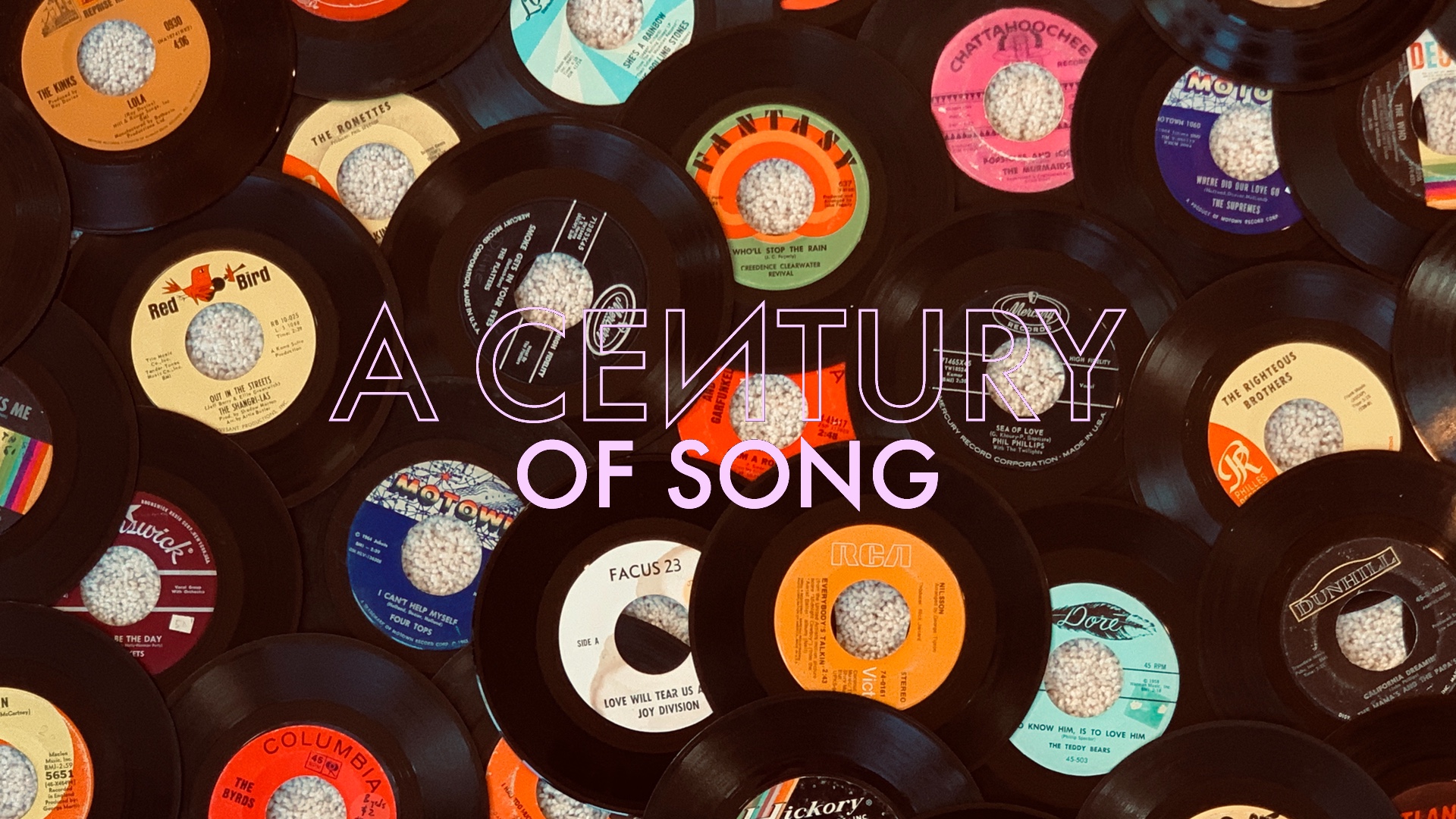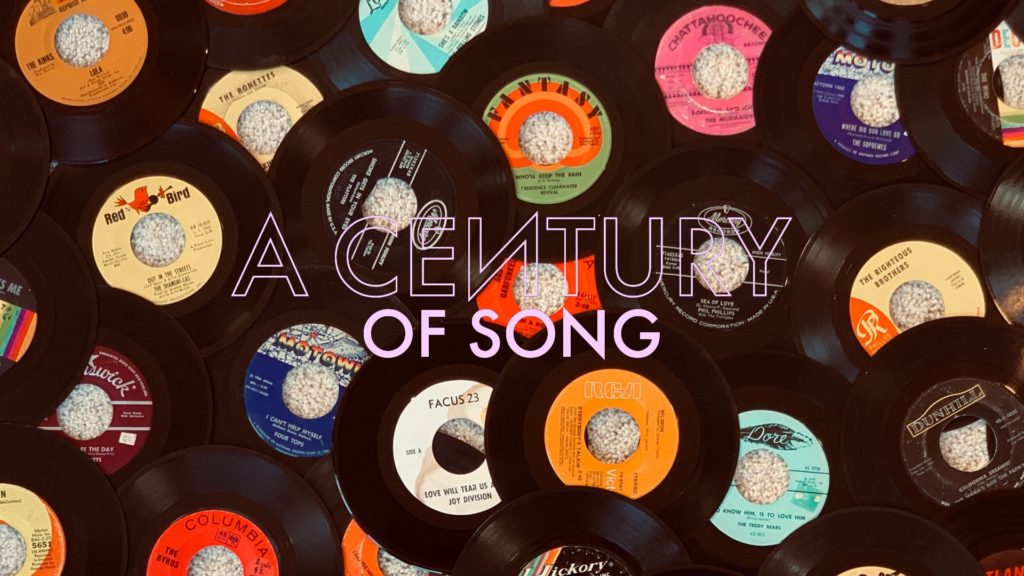
A Century of Song is an attempt to summarize 100 years of popular music through 1000 carefully chosen tracks. Included within this list are landmark singles, stellar album cuts, huge hits, hidden gems, and more than a few personal favorites. Read the introduction for the project here, and enjoy the embedded videos and Spotify playlist.


Perhaps it was due to the multi-dimensionality of his work, but Ray Charles is often overlooked within conversations about the first wave of rock & roll innovators. Charles had been a successful performer well before Chuck Berry, Little Richard, and Elvis Presley – and recorded for the R&B-associated Atlantic Records – but his key hits of the fifties were as rock-oriented as those of any of his contemporaries.
More than any other track in his oeuvre, Charles’ definitive hit, “What’d I Say,” confirms his electric talents. Famously composed on the spot at the end of a 1958 gig, the song brims with improvisational spontaneity, even in its 1959 recorded version. That it would become the permanent closer in Charles’ live sets for the remainder of his career speaks to the song’s lasting, climactic power.
Based off of Charles’ indelible electric piano riff, “What’d I Say” opens on a lengthy instrumental introduction, before settling into its now-iconic verses. Charles keeps the lyrics short and sweet, allowing the song to thrive on the surging power of its breakneck pace and undeniable, rhumba-inspired groove.
After a false stop – and a flip of the 45rpm single – “What’d I Say” goes from electrifying to provocative. Borrowing from the call-and-response tradition of Black gospel music, Charles leads his backing vocalists, The Raelettes, in an increasingly-risque dance of seduction. Little like it had been heard before within the realm of pop music, but its impact would be seismic.
For many listeners – and even a number of radio stations – the second half of “What’d I Say” was all too suggestive. Coupled with its borrowing of religious musical motifs, the song set off a wave of controversy, especially within the Black gospel community. Despite this, the single would prove to be a massive hit, and one of the most influential tracks of the rock & roll era.


There’s been more than enough written about “(I Can’t Get No) Satisfaction” over the years – so much in fact, that I’m not sure I can add much to the conversation. A global smash hit that better defined the rock & roll attitude of the mid-sixties than any other track, “Satisfaction” is beyond iconic, and arguably the definitive song in The Rolling Stones’ catalog.
While their first two years as a band had found the Stones gaining significant attention as the rougher-around-the-edges alternative to The Beatles, their actual recorded output was less than visionary. By early 1965, signs of the group’s artistic merit truly began to show, perhaps most notably on the arresting B-side “Play With Fire” (#511).
“Satisfaction” was something different altogether – a track that melded the group’s “bad boy” imagery with a truly memorable rock anthem. Taking on consumerism, celebrity, and sexual frustration, the song may have defined the notion later described as “first world problems,” but it did so with Keith Richards’ instantly iconic fuzz guitar riff and an unforgettable vocal performance by Mick Jagger.
In time, the Stones would dabble with baroque pop, psychedelia, and socially conscious messaging. While they would achieve commercial success and make memorable music in each of these modes, one could easily make the argument that no style or song ever fit the group’s public image more naturally than “Satisfaction.”


Like virtually the entire rest of the world, I had never heard Nick Drake’s music until the title track from his final record ended up in a Volkswagen commercial in 1999. The spot – titled “Milky Way” – remains one of the very few pieces of advertising that I will openly admit a fondness for, but still, years after seeing it, the source of its soundtrack was a mystery to me.
I didn’t connect “Pink Moon” to Nick Drake until early 2003. Having spent much of the preceding few months listening to Beck’s 2002 album, Sea Change, I decided to look into the artist whose name – alongside that of Serge Gainsbourg – kept popping up as a reference point in reviews. Still pre-YouTube, iTunes, Spotify, et al., the only place I could find even a snippet of Drake’s music online was on Amazon, on the page to purchase the Pink Moon on CD.
From the first chord, I immediately recognized the song. I would spend the rest of the afternoon driving around Portland’s west-side suburbs trying to find the album at any place that sold CDs. Returning home empty-handed, I relented, and purchased it on Amazon – the first time I ever bought anything from the now-behemoth company. The corporate nature of both my introduction to “Pink Moon” and my eventual acquisition of its parent album could have left something of a sour note, at least had the music not been so beautifully stark and affecting.
Pink Moon – the album – would enter my own personal pantheon a couple of months later. The just-under thirty-minute album would soundtrack several hours of an overnight, white-knuckled drive back home to Arizona, in the wake of a family emergency. On a purely superficial level, that trip may have resembled the idyllic scene from the “Milky Way” ad: two young twenty-somethings on a moonlit drive in a reliable car. While its circumstances were entirely different, every time the CD restarted itself – and those slow-strummed chords gave way to Nick Drake’s haunting vocals – it provided a much-needed sense of calm reassurance.
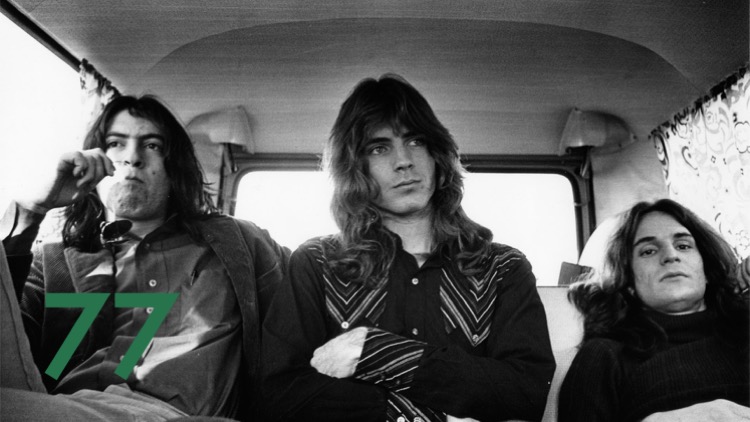

From the opening glassy guitar chords to its final beat, this here is an utterly perfect three minutes of music from a band that should have been huge. Of course, the irony is that the ambitiously named Big Star would ultimately go down as one of the most beloved cult bands of all-time, but “September Gurls” proved that the Memphis group had all of the ingredients for superstardom.
Notably, Big Star was done in by a mountain of bad timing and even worse luck. Though their 1972 debut, #1 Record, was a nearly-flawless piece of power pop, its commercial failure – largely attributed to poor distribution – led to the departure of Chris Bell, who would subsequently become one of rock music’s most tragic figures.
With Bell out of the picture, vocalist/guitarist Alex Chilton assumed creative control of Big Star. While in time, Chilton would become just as famous for his self-destructive artistic tendencies as he would for his gift for songcraft, it’s only the latter that is on display on the centerpiece to Big Star’s second record, 1974’s Radio City.
“September Gurls” is perfectly caught between Big Star’s influences (The Beatles, The Byrds) and the bands for whom they themselves would become critical forebears (R.E.M., The Replacements, Teenage Fanclub). Mixed with the inescapable melodicism of the song’s many hooks, Chilton’s shaggy dog persona would become an archetype for generations of semi-reluctant rock stars to follow.
The autumnal beauty of “September Gurls” – and all of Big Star’s early music – would ultimately give way to the darker side shown on their troubled-but-brilliant final record, Third/Sister Lovers. While the band’s most idealized incarnation was the one with Chris Bell still in the fold, this track from their transitional middle period stands as their single greatest moment on record.


In 1970, Stephen Stills wrote and released “Love the One You’re With” – a song that embraced the worst aspects of post-Woodstock, commercialized, hippie “free love” mentality. Bland, uninspired, and with a problematic message to boot, it was – quite literally – the sound of settling. Naturally, the song – and several subsequent covers of it – was a major hit.
Four years earlier, Bob Dylan had written a song that was the polar opposite of Stills’ lunkhead anthem. The centerpiece of his 1966 masterpiece, Blonde on Blonde, “Visions of Johanna” aches with the pain of being separated – physically, emotionally, spiritually – from the one you love, and knowing that there can never really be a substitute.
There are two women at the heart of “Visions of Johanna”: the distant muse who inspired the song’s title, and Louise. Louise is present, attainable, and alluring enough to inspire some of the finest poetry of Dylan’s career. However, there’s a unavoidable catch:
Louise, she’s all right, she’s just near
She’s delicate and seems like the mirror
But she just makes it all too concise and too clear
That Johanna’s not here
The ghost of ‘lectricity howls in the bones of her face
Where these visions of Johanna have now taken my place
Amid five labyrinthine verses of Dylan’s most vivid and bizarre imagery – ex. “jewels and binoculars hang from the head of the mule” – “Visions of Johanna” comes no closer to a sense of resolution for its jilted narrator. Instead, it drifts along, through empty lots and echoing halls, on an equally wistful instrumental backing – an airy Hammond organ providing an ethereal stand-in for the absent-yet-ever-present Johanna.
In an odd twist of irony, “Visions of Johanna” was recorded on February 14, 1966. It was only fitting that – on a date in which the Stephen Stills of the world reduce the most human of emotions to their most banal and trite expressions – Dylan captured the essence of love and longing in such an exquisite manner.
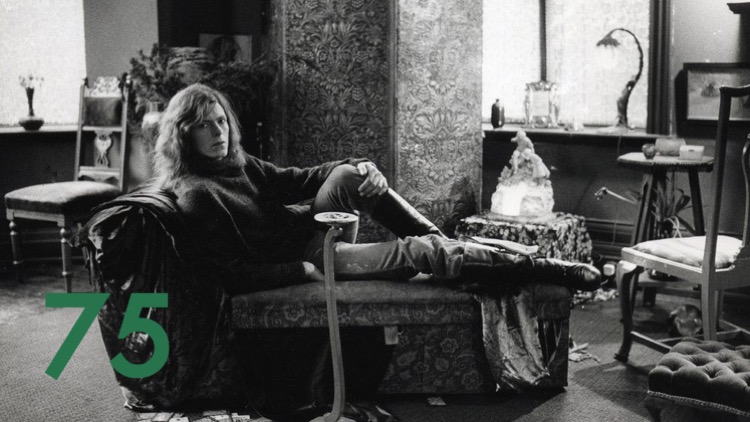

Though David Bowie had displayed signs of greatness in song form prior to 1971, that year’s Hunky Dory was his first consistently stellar album. While several of the record’s tracks would remain among the most beloved songs of Bowie’s career, even they are dwarfed by Hunky Dory‘s majestic centerpiece, “Life on Mars?”
Taking the operatic flourishes that had skirted the edges of his earlier work up a notch, “Life on Mars?” begins small, but explodes into cinematic grandeur on its booming choruses. Bowie is in full command of his vocal performance, and the triumphant guitar work and musical arrangement of Mick Ronson helps to blaze the path for the emergent glam sound – a styling that the pair would further mine on 1972’s iconic The Rise and Fall of Ziggy Stardust and the Spiders from Mars.
The surrealistic, sci-fi imagery of “Life on Mars?” represented a newfound sophistication in Bowie’s songwriting as well. While there are plenty of tangible, memorable images within its lines, the track never exactly coalesces into a coherent narrative, but manages to nevertheless remain consistently compelling.
For many listeners, “Life on Mars?” represents the apex of David Bowie’s artistry. While he still has some spots left in the remaining entries of this list, it’s hard to argue against that position. “Life on Mars?” is nothing less than the thrilling sound of one of pop music’s greatest practitioners truly coming into his own.


There are countless songs about tragedies of a far greater magnitude, but I think one could make the argument that “Sam Stone” is the saddest song ever penned. Perhaps it’s the relatable nature of John Prine’s everyman story and affecting style of writing; or, perhaps it’s the lingering sting of Prine’s still-recent death that makes the song seem particularly poignant. Either way, from the time that I began this project roughly a year ago until now, there is no song that has risen farther from where I initially expected it to land to where it ultimately ended up.
Though it focuses on a single fictional story, “Sam Stone” tells a tale true enough to have been reflected in the lives of countless veterans returning from service in Vietnam. Originally titled “Great Society Conflict Veteran’s Blues,” the song offers a stinging indictment of the treatment of returning veterans, without ever lobbing a single (overt) punch at the government that first put Sam Stone in harm’s way, and then turned its back on him.
Where the song does pack a punch is in its gut-wrenching chorus – one of the most memorable ever laid to tape:
There’s a hole in daddy’s arm where all the money goes
Jesus Christ died for nothin’ I suppose
Little pitchers have big ears
Don’t stop to count the years
Sweet songs never last too long on broken radios
That chorus ends with Prine delivering a resigned “mmm, mmm, mmm, mmm,” as if knowing that no words could adequately provide the punctuation to the most sorrowful of sentiments.
That sense of desolation is similarly reflected in the song’s sparse instrumental backing. Prine’s nimbly-fingerpicked acoustic guitar is joined by a lonesome, mournful organ – one that gives the already-heartbreaking track a funereal feel. It all combines to make for a piece that is nothing short of masterful, delivered plaintively by a true American original.
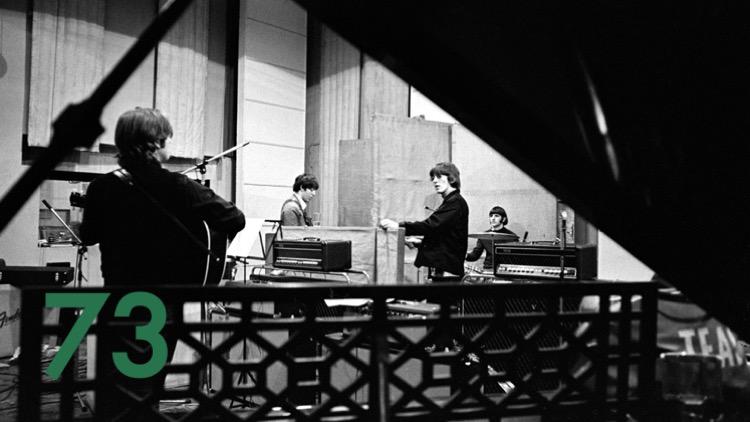

I’ve been recording music – in one capacity or another – for nearly as long as I have conscious memory. Though my victories in that realm have all been of a relatively minor variety, I’ve been lucky enough to experience some of those exciting moments of artistic creation: ones where you step back and really hear what you’ve made for the first time, knowing that moments ago it didn’t exist outside of your own imagination.
I cannot even begin to imagine what it would have been like to stand in the control room of Abbey Road’s Studio Two in April of 1966, listening as the monitors first played back “Tomorrow Never Knows.” As the six men who created the track – the four Beatles, plus producer George Martin, and recently-promoted engineer Geoff Emerick – listened back, they knew they were hearing something with virtually no precedent, and knew that the world was eagerly anticipating its arrival.
Yes, “Tomorrow Never Knows” had influences, but ones that had existed entirely outside of the realm of popular music. The musique concrète experimentations of Karlheinz Stockhausen, the Tibetan Book of the Dead, and LSD-inspired psychedelia may have all made the rounds in the nascent counterculture, but none had even come close to permeating the boundaries of pop culture. That they would be delivered by way of rock’s most famous and beloved ambassadors was as revolutionary an idea as the sound of “Tomorrow Never Knows” itself.
Naturally, even few of those “in the know” had any idea what to make of “Tomorrow Never Knows” when it appeared as the closing track to Revolver in August of 1966. However, the majority of critics and contemporaries who initially derided the track would soon find themselves embracing even its most outré elements. More than any other recording from the wildly innovative mid-sixties, “Tomorrow Never Knows” expressed possibilities that had been unimaginable just shortly before. It is a critical artifact in understanding just how influential – and yes, radical – The Beatles truly were.


There were at least two major sources of inspiration for what would become Johnny Cash’s signature song. The first was a track from a little-known 1953 concept album by Gordon Jenkins, called “Crescent City Blues.” From it, Cash would borrow liberally from both the vocal melody and lyrical framework – so much, in fact, that he would eventually be forced to pay Jenkins $75,000 as the result of a plagiarism law suit.
The second source of inspiration was a 1951 documentary called Inside the Walls of Folsom Prison, which Cash watched while stationed in West Germany as a member of the U.S. Air Force. It was there that Cash would repurpose Jenkins’ composition into a compelling story of crime and punishment – and eventually one of the most iconic songs of the twentieth century.
After returning from overseas, Cash embarked on a recording career with Sam Phillips’ Sun Records label. Among the first recordings that Cash made for Sun, “Folsom Prison Blues” would be released as a single in late 1955. The track would become a massive hit on the country charts, and have tremendous crossover success in the pop market as well.
Despite its runaway success – and the role that it played in launching Cash’s decades-long career as one of America’s most recognizable musical figures – “Folsom Prison Blues” wouldn’t reach its idealized state until 1968. Featured as the opening track to Cash’s landmark live recording, At Folsom Prison, the song’s burning intensity led to a rapturous reception by a literally captive audience. Though the roar of approval that greeted the song’s most notorious line – “I shot a man in Reno just to watch him die” – was apparently the result of clever audio editing, the symbolism of the moment was not lost on listeners.
The success of that live version of “Folsom Prison Blues” – and its parent album – would ultimately revitalize Cash’s career, after years of sagging sales and drug problems had threatened to derail it. By the time of his 2003 death, Cash had been enshrined as an icon of American culture and an embodiment of artistic resilience. This track stands as his greatest moment.


Ironically, there are plenty of people who would celebrate the previous song and its trivialization of cold-blooded murder, while bristling at the inaccurately perceived glorification of violence in this one. As Kendrick Lamar alludes to in his greatest song to date, hypocrisy is often a hard thing to acknowledge.
The citation of “Black-on-Black” violence is one of the least subtle dog whistles in contemporary conservative media, but Kendrick tackles the thorny subject in a particularly compelling manner with “The Blacker the Berry” – a standout among many on his 2015 masterpiece, To Pimp a Butterfly. Released as the album’s second single, the song would draw relentless praise from critics, while simultaneously sparking controversy within the hip-hop community.
Fueled by the outcry over the deaths of Trayvon Martin and Michael Brown – and the subsequent emergence of the Black Lives Matter movement – “The Blacker the Berry” sees Kendrick Lamar turning inward, examining his actions in what he himself described as “tear[ing] down my own community.” Declaring himself “the biggest hypocrite of 2015,” the track finds the Compton rapper decrying his own complicity in cycles of violence. Understandably, the perspective of “The Blacker the Berry” touched a nerve with many listeners, some of whom argued that Kendrick was ultimately undermining the messaging of movements like BLM by acknowledging his own perceived shortcomings.
Regardless of one’s take on the song, few could deny the power of its message, and the intensity of the music that delivered it. Featuring what may be the most impassioned performance of his career thus far, “The Blacker the Berry” further codified Kendrick’s status as the most vital rapper of his time. Paired with the memorable chorus by the Jamaican vocalist Assassin, and the ominous instrumental backing by Terrace Martin, Boi-1da, and KOZ, the track was given an even deeper sense of urgency.
Time has a way of settling cultural debates, but it didn’t take much time for many critics – including this one – to acknowledge that To Pimp a Butterfly better captured the mood of the 2010s than any other album of the decade. In a record rich with innovation and brilliant lyricism, “The Blacker the Berry” stands as the most memorable piece from an unforgettable album.


